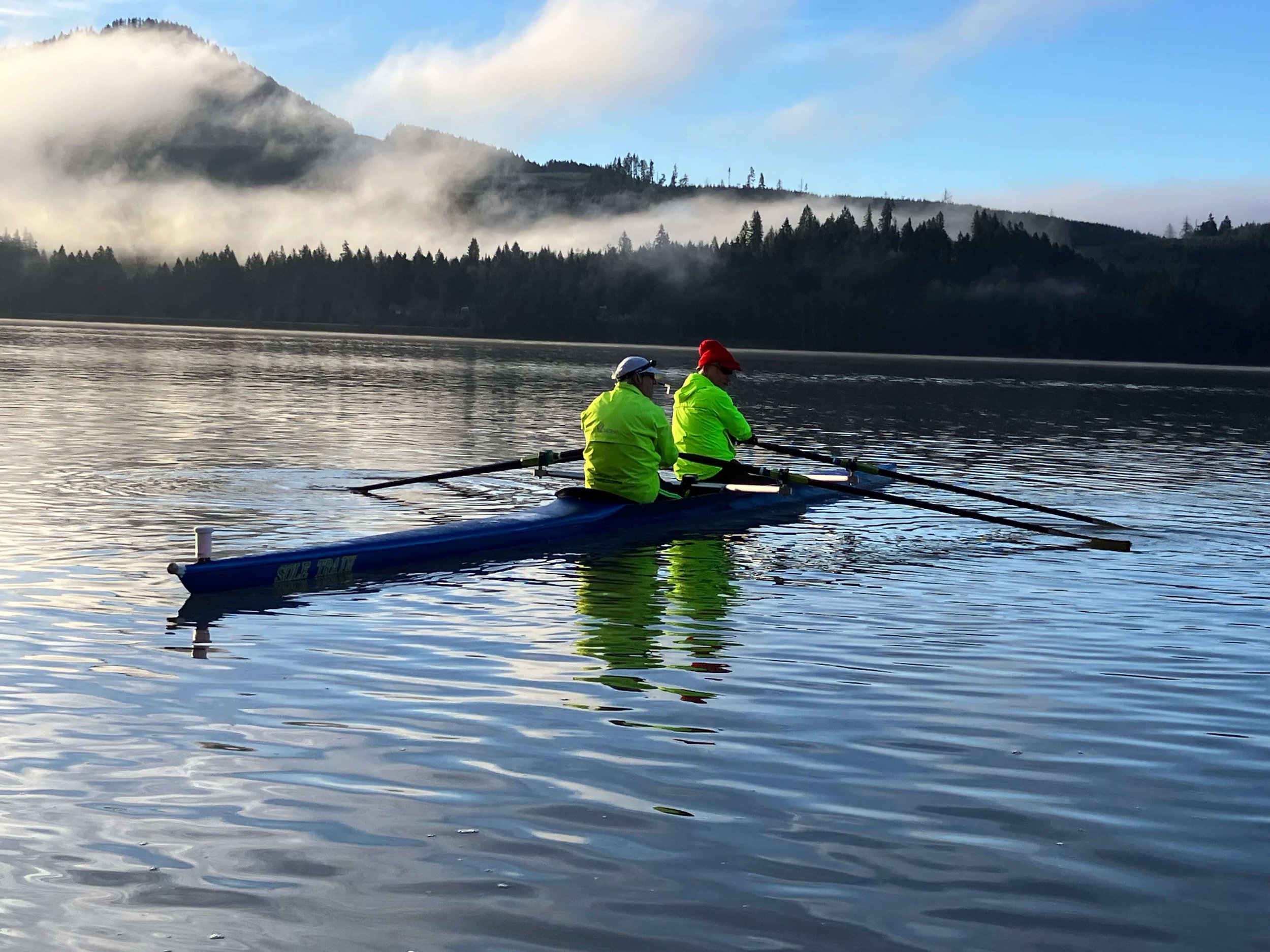
Frequently Asked Questions
-
Rowers are all shapes and sizes and ages. Rowing is an athletic endeavor but the focus in Learn-to-Row is on proper technique and having fun. Participants should be able to perform a low squat, and shift from a low kneeling or sitting position to a standing position without assistance. In addition, participants should be able to lift 25 pounds overhead. If you have concern about a physical limitation, please contact us to determine if rowing is right for you.
-
Fill out the USRowing liability waiver.
Pay Learn To Row fee of $100
-
Our Learn-to-Row (LTR) program begins with sculling, which is rowing with two oars in stable, single boats. However, learning to row is just the beginning. During your first novice year coaches will incorporate you into larger team boats including sweep rowing which is rowing with one oar.
-
Please communicate with the coach about any schedule changes.
-
Classes are ongoing on weekend mornings. The coach will coordinate with you a start date that will work with your schedule.
-
In general, wear clothing that is not baggy. Loose pants or long shirts can get caught in the movable seat tracks.
A rower’s clothing is similar to that of a cyclist or runner. Long tights, shorts, or comfortable pants that are not baggy are fine. Layering is good for cold weather, and you may want a waterproof rain jacket on rainy days. Most rowers wear a brimmed hat, and you may want to wear sunglasses in sunny weather.
Wear a pair of shoes that are easy to take off and put on at the dock. Each boat has built-in shoes. Wear or bring socks. In colder months, you may want wool socks or neoprene diving socks to keep your feet warm.
-
At Lowell State Park, park on the north side of the park near the picnic pavilion or continue west to the parking circle. Walk to the boathouse, which is just west of the gate.
-
Each rowing session will take about 2 hours, which will include taking the boat out to the water and putting everything away.
-
In all Learn-to-Row lessons you begin rowing in stable boats. While it is a rare occurrence for someone to end up in the water during LTR, the possibility does exist. It is always best to have dry clothes in the event you do end up in the water. A coach will always be with you on the water during class, either on the dock or in a launch boat.
-
Fill out the interest form and someone will respond within 48 hours. We will share with you when the next Learn-to-Row dates are and coordinate which date you want to start. You will need to fill out the USRowing Liability Waiver and either bring with you to your first lesson or email to diantha.hull@gmail.com
-
We are thrilled you’ve caught the rowing bug! To continue rowing, sign up to become an OAR member. The first year as a new member, your membership dues are a discounted $300 biannually. While our dues are from January to June, and July to December, you will pay a prorated fee if you join mid-session. By joining as a new member, you will row with coached practices, meet other rowers, be eligible to compete in regattas and are encouraged to participate in fun club events.
-
All members of Oregon Association of Rowers must complete a flip test before taking a club boat out without coach supervision. Under the supervision of a coach, you will row out in one of our designated flip test boats, flip the boat completely over, and successfully re-enter the boat. We usually conduct flip tests in early summer, depending on the weather and water temperature.
-
The rowing float test measures a person's ability to float, tread water, or swim in place. It's conducted in a swimming pool over six feet, and you will wear long pants, and a long-sleeved shirt. The float test must be retaken every five years.
The test involves:
Floating, treading water, or swimming in place for 10 minutes without touching the bottom or sides of the pool.
Putting on a personal flotation device (PFD) in the final minute.
Continuing to tread water while wearing the PFD.
